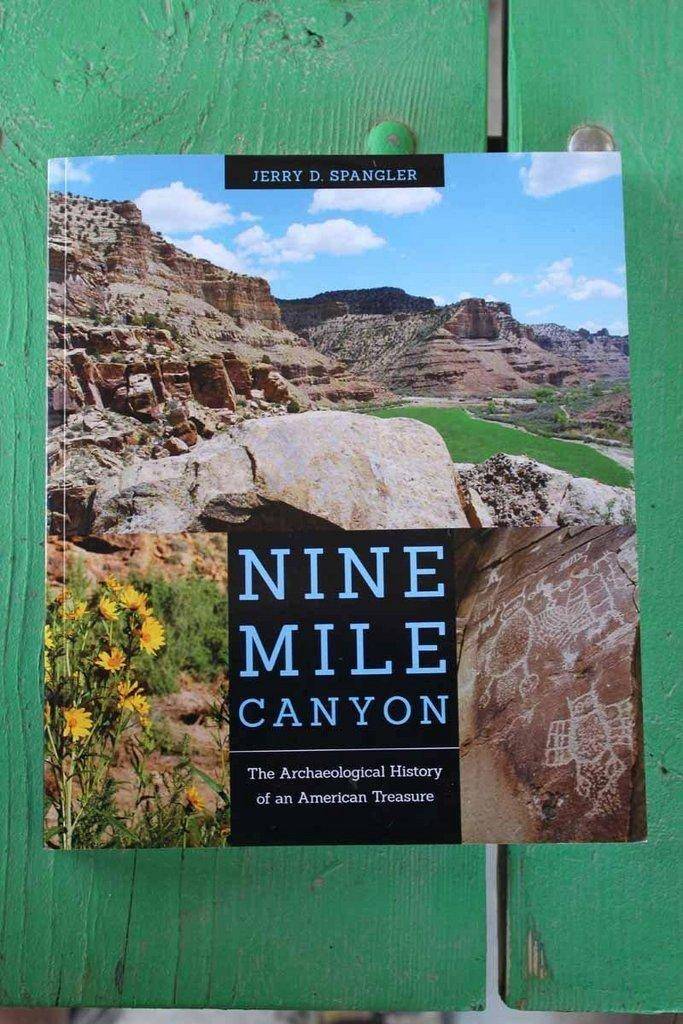Contributing Writer-Dennis WIllis
The Nine Mile Canyon Coalition hosted its spring event on Saturday. More than 50 people gathered at the Mead’s Nine Mile Ranch for a day of presentations and tours.
Most of the guests hailed from around the state of Utah, although one couple came from Maine to participate. The day started with three lecture/slide show presentations.
Principle Investigator at Montgomery Archaeological Consultants Jody Patterson discussed discoveries made during road and pipeline work in the canyon. One surprise was the amount of deeply buried material encountered. Some structures and artifacts were buried by up to 16 feet of soil. This is a testament to the very active geology, floods and debris flows moving material from side canyons onto the alluvial fans found in the main canyon. Patterson described and illustrated pit house structures found in the middle of the road where nobody anticipated them. Two of the pit houses had been occupied three times in the period between 700 and 1250 AD. Each successive occupation was built directly on top of the previous structure.
Jerry Spangler of Colorado Plateau Archaeological Alliance gave a presentation on the early archaeologists who explored Nine Mile Canyon from the late 1800’s through the 1930’s. One focus of his work has been to relocate the sites they excavated and evaluate their present condition. This has been a challenge since they were working in the days before GPS and accurate maps were available. Expedition notes and photographs are scattered in libraries, museums and private collections across the US and Canada. One of Spangler’s interests are the fort or tower structures found throughout the canyon. Their purpose is unclear and there is an effort currently underway to determine if they are located so as to form a network of lookouts and communications.
Will Miller is an attorney with the Attorney General’s Office and avid historian. He discussed his work studying the settlement patterns in Nine Mile Canyon from the 1880’s through the 1930’s. Much of his information is gleaned from census and land records as well as personal histories and documents. Nine Mile Canyon and the Uintah Basin were some of the last migrations and settlements in Utah. They were different from the Mormon Village settlement pattern and industry settlements found in the rest of the state. Will described a very transient population, with nearly 80 percent turnover of individuals between each decade’s census. Several audience members had family connections to the canyon and were able to offer their observations and family lore.
After the lectures, coalition board members stationed themselves at several sites throughout the canyon to assist visitors at sites and provide information on archeology and history. Attendees were given a paper outlining a self guided tour of the canyon and identified the sites where volunteers would be stationed. In addition to some of the well known sites, like the First Site, Daddy Canyon, and Great Hunt panel, a few were a little more off the beaten bath such as the Owl Panel and pregnant buffalo, required some hiking. One site, Stick Figure Ridge, required somewhat arduous climbing and hiking.
The day ended with a very satisfied group of people with a rewarding and stimulating experience with the national heritage that is Nine Mile Canyon. The Nine Mile Canyon Coalition will hold its annual fall gathering on September 13-15.

